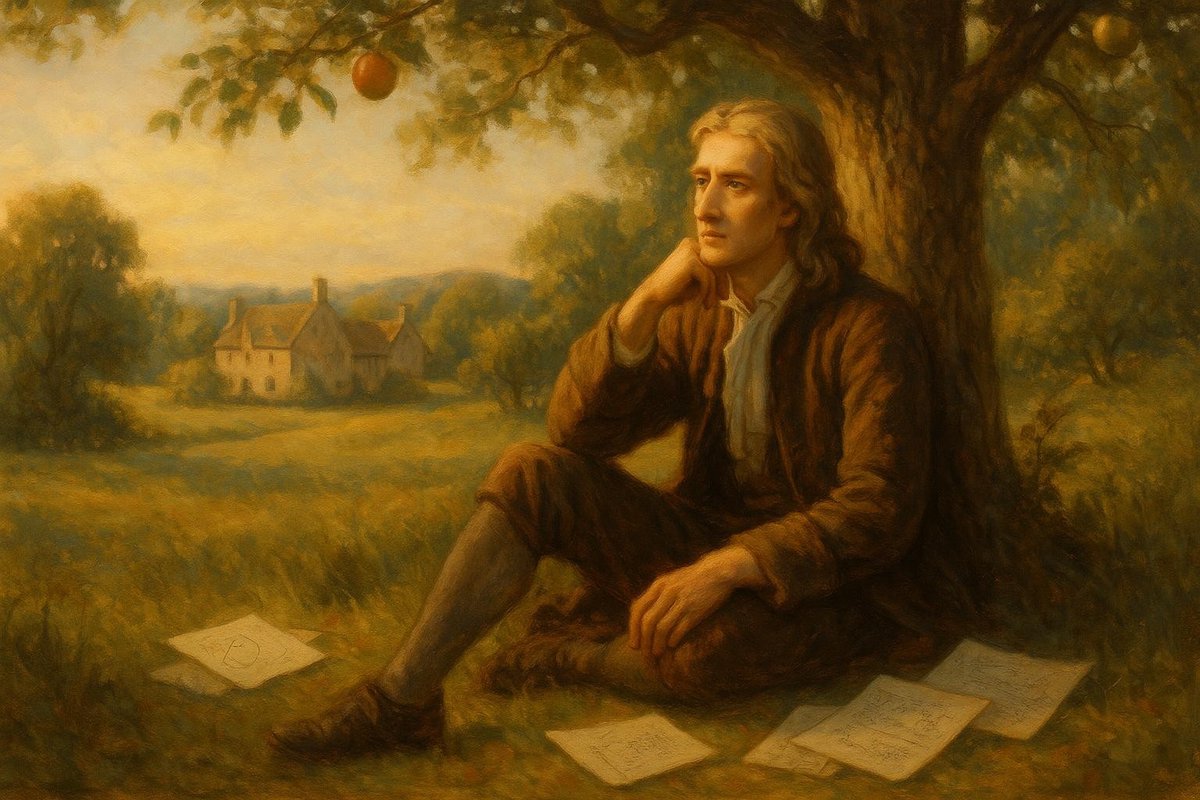
In the Quiet of His Own Mind
Imagine a young man, isolated in the serenity of the English countryside, where apples fall with perfect elegance. Isaac Newton, during a period of intense solitude, conceived ideas that would forever alter our understanding of the universe. It was amid the tranquility of Woolsthorpe Manor where his thoughts intertwined with nature and mathematics, sparking revelations that still resonate today.
Early Influences
Newton’s journey into the heart of mathematics began in an England steeped in scientific curiosity. During the 17th century, the air buzzed with ideas ripe for exploration.
- Born in 1642, Newton showed an early fascination with the mechanical world. His curiosity was nurtured by his mother and the countryside that surrounded him.
- Newton’s education at the University of Cambridge sharpened his mathematical prowess, but it was the closure due to the Great Plague that sent him back home, setting the stage for his solitary reflection.
- Within the confines of Woolsthorpe, he ventured into the vast landscapes of calculus, optics, and celestial mechanics.
What made this environment so fertile for Newton? The solitude allowed his ideas to mature without distraction, much like a seed in fertile soil. This quiet contemplation became a crucible for profound innovation.
Mental Models: Building the Universe in the Mind
Newton’s intellectual toolkit was his mind, a place where he could visualize the invisible forces of nature. He was a master of creating mental models that made abstract concepts tangible.
- He imagined gravity as a force linking the heavens and the Earth, famously inspired by an apple falling from a tree.
- His ability to mentally ‘see’ equations dancing in harmony allowed him to formalize calculus, a language to describe change and motion.
- Newton’s mental constructs were not just theoretical; they were the blueprints for empirical investigation and experimentation.
His intellectual solitude was not a barrier but a bridge. It was as if he could converse with the universe itself, and in that dialogue, he found the laws that govern all motion.
Challenges & Resilience
Newton’s path was not without obstacles. Every genius faces resistance, both external and internal, testing their resolve.
- Despite his groundbreaking work, Newton encountered skepticism from contemporaries and confrontation with fellow mathematician Gottfried Wilhelm Leibniz over the invention of calculus.
- His shy and introverted nature meant that he often withdrew from public disputes, preferring the company of his thoughts.
- Yet, Newton’s resilience was a testament to his commitment. He persisted, driven by an insatiable curiosity and a belief in the truth of his discoveries.
How did he persevere? Through introspection and a relentless pursuit of knowledge, Newton transformed challenges into stepping stones toward enlightenment.
Legacy: The Laws that Shaped the World
Newton’s solitude bore fruit that changed the world. His laws of motion and universal gravitation laid the foundation for classical mechanics, influencing countless fields.
- The Principia Mathematica, published in 1687, became a cornerstone of scientific thought.
- His work on calculus opened new vistas in mathematics, revolutionizing the way we understand dynamics and change.
- Newton’s vision extended beyond his own time, influencing scientists like Albert Einstein, who stood on the shoulders of this quiet giant.
His legacy is a testament to the power of introspection. Newton’s journey reminds us that sometimes, the most profound insights come from within.
Fuel Someone Else’s Curiosity
Newton’s story is more than a tale of mathematical triumph. It’s an invitation to explore the power of solitude and curiosity.
Who knows what ideas might emerge when we allow ourselves time for quiet reflection? Share this journey with others, and let it spark a conversation on how solitude can lead to groundbreaking insights. Happy exploring!

Leave a Reply